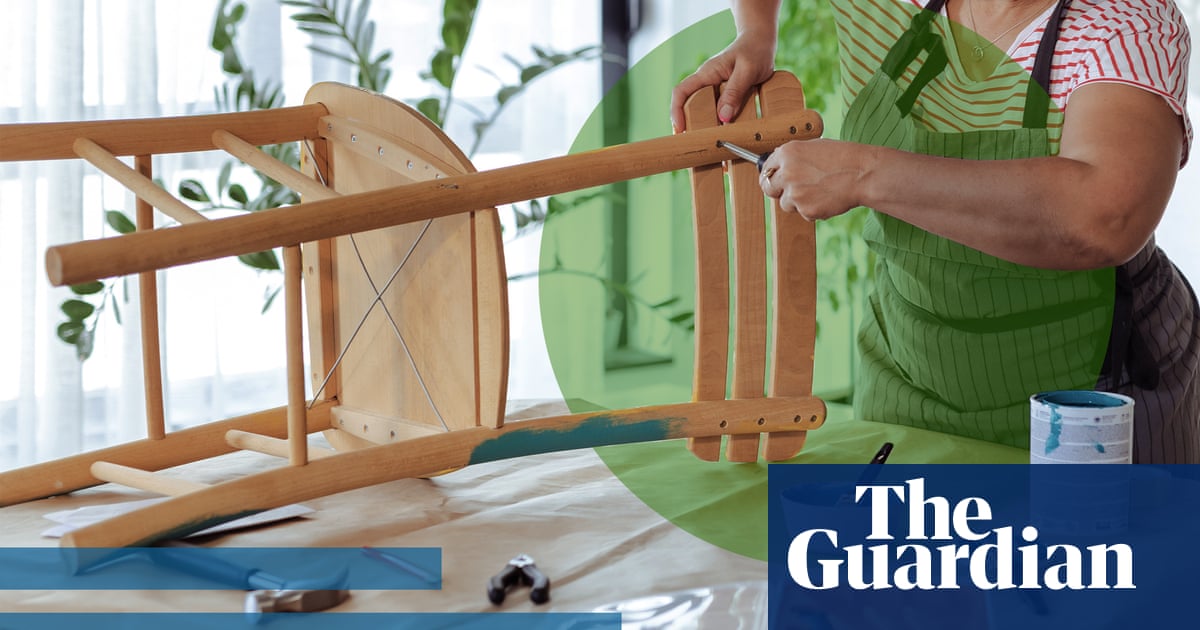You’ve heard of fast fashion – but what about fast furniture?
It’s the cheap stuff churned out in mass quantities with little regard for quality, all designed to be ditched within just a few years.
Worse yet, toxic so-called “forever chemicals” – known as Pfas – have been found in some cheap furniture products.
Here’s how to sidestep the environmental and health risks of fast furniture and kit out a comfy home in sustainable style.
Secondhand furniture isn’t just easier on your wallet – it’s one of the most sustainable choices you can make.
Each year, Australia generates 30,000 tonnes of commercial furniture waste alone – the amount including domestic waste is unknown – with 95% of this ending up in landfill.
Buying secondhand keeps perfectly good items in circulation and out of landfill, while sidestepping the carbon emissions, raw materials and chemical treatments often involved in manufacturing new pieces.
After buying and lightly renovating my old house in Tarntanya (Adelaide) in 2021, I turned to online marketplaces and secondhand stores to deck it all out.
Looking around my little home now, almost everything was bought secondhand or found – the couch and coffee table; my bed frame, bedside tables, full-length mirror and chest of drawers; the fridge, pantry cupboard and my work desk; even the light fittings and a 1960s etched glass hallway door.
Another key priority for me when decorating was creating a healthier home to live in, which meant focusing on natural fibres when sourcing furniture and accessories.
A recent studyfound Australians are eating and inhaling “significant” numbers of microplastics at home, shed from plastic and synthetic-based floors, furnishings and homewares.
But natural fibres can often be more expensive, so I again turned to secondhand options.
With patient searching, I was able to find items such as woollen rugs and linen sheet sets in excellent condition secondhand. I also prioritised buying older furniture that’s built to last, especially items made with solid wood and sturdy joinery.
Secondhand furniture comes without that distinctive “new furniture smell”, which is actually a sign that volatile organic compounds (VOCs) are being released into the air, some of which are harmful to health.
Most VOCs are released (through a process called off-gassing) within the first few days and weeks, making secondhand furniture a less toxic choice.
If you can’t or don’t want to buy secondhand, get smart about what to look for when buying new.
Australian Furniture Association (AFA) CEO, Patrizia Torelli, says a good place to start is with third-party certification bodies such asGood Environmental Choice Australia, FurnTech’sGreen Tick programandB Corporation. “They can verify any sustainability claims,” she says.
You can also request product specification sheets to check which materials and chemicals were used during the manufacturing process – the answers can be shocking.
A 2022Chemicals of Concern Industry Reportfound that commonly used furniture coatings, fumigants, glues, dyes, solvents, moisture and flame retardants pose a risk to human and environmental health.
The report found regular use of worrying chemicals, including formaldehyde and Pfas. Six of the worst offenders have since been banned via the federal government’sIChEMS Register.
“You might purchase a lovely fabric lounge suite, it’s got all the lovely add-ons like water repellent and so on – that’s where the chemicals are,” Torelli says.
Locally made furniture tends to be less toxic, she says, because reputable Australian producers are increasingly phasing out harmful chemicals. Plus, many overseas products must be sprayed with fumigants upon entry to Australia.
Torelli recommends asking yourself the following questions to help determine whether a piece of furniture has been made ethically and sustainably:
Was it made locally in Australia?
Is it made from quality renewable or recycled materials?
How easy is it torepair or refurbish?
What are the end-of-life options for recycling or reuse, to keep it out of landfill?
Many leading furniture brands offer repair services, and some even have take-back programs, where they’ll refurbish unwanted older pieces or dismantle them to reuse parts.
Still, it’s a lot to consider when you just want a new couch – but the process could become far easier in the future. AFA and the Australian Furnishing Industry Stewardship Council (AFISC) are pushing for aFurniture Passport Australia System, a digital tracker that would trace products’ material origins, compliance certifications, environmental impact and potential for repair, reuse or recycling.
“If you went to any retail outlet, you could scan the product code and it would tell you everything – where it was made, what’s in it, how it can be repaired – helping create a more sustainable furniture life cycle,” Torelli says.
Until then, it’s on us as consumers to ask questions, dig a little deeper – and look beyond the price tag to what each piece really costs.
